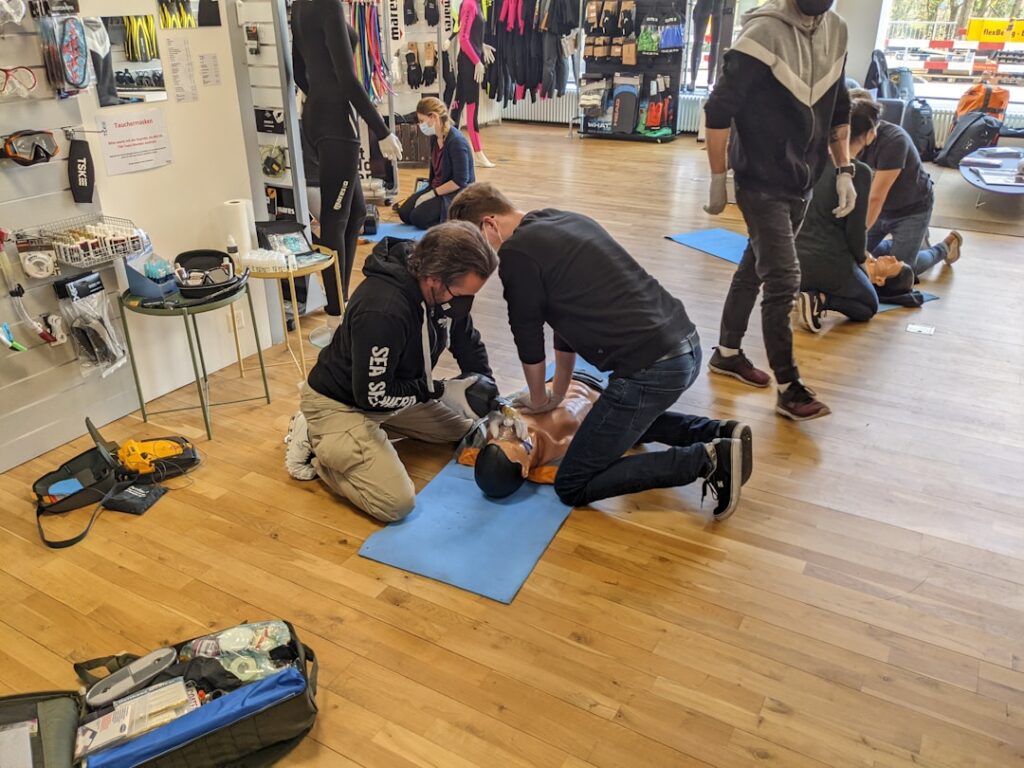CPR Certification: Why Every Adult Should Sign Up for a Class
Cardiopulmonary resuscitation, or CPR, is a life-saving technique that can make a profound difference in emergencies. With the rise in health-related events, acquiring CPR certification is becoming increasingly crucial. It equips individuals with the skills necessary to provide immediate help and potentially save a life before professional medical assistance arrives. This certification is not just for healthcare workers; it’s a valuable skill set for adults from all walks of life. You can search for ‘CPR Certification Classes in Austin, TX by CPR Classes Near Me‘, which adhere to the standards required for comprehensive training. Keep reading to understand why enrolling in a CPR class is a step you should consider seriously.
How to Find and Choose the Right CPR Class for You

Finding the right CPR class can be a simple process with a little research. Starting with local hospitals, community centers, and the Red Cross can lead you to certified courses near you. It’s important to ensure that the course you select is recognized by health authorities and adheres to the latest American Heart Association (AHA) guidelines.
Reviews and testimonials can be invaluable when selecting a certification class. They provide insight into the experiences of past participants and the quality of instruction. It’s beneficial to look for courses that balance theory with practice and offer a supportive, engaging learning environment.
In today’s digital landscape, online courses are also available for those who prefer virtual learning or have busy schedules. While these are convenient, an in-person assessment is often necessary to complete certification, ensuring hands-on skills are properly demonstrated and evaluated.
Understanding the Basics of CPR and Its Lifesaving Potential
At its core, cardiopulmonary resuscitation is a combination of chest compressions and artificial ventilation. The goal is to simulate a heartbeat, ensuring that oxygenated blood continues to circulate through the body. Compressions need to be done with the correct frequency and depth to be effective, which is where professional training comes into play.
When performed correctly, CPR can double or even triple a person’s chances of survival after a cardiac arrest. The technique plays a significant role in the ‘chain of survival,’ which includes early recognition of cardiac arrest, prompt calling of emergency services, effective CPR, and advanced care from medical professionals. Each link in the chain is vital to a successful outcome.
During a cardiac emergency, the brain is particularly vulnerable to damage due to oxygen deprivation. Through CPR, a continuous supply of oxygen is provided to the brain, drastically reducing the risk of severe brain injury. This aspect underscores the importance of immediate and competent CPR application until emergency responders can take over.
Overcoming Common Misconceptions About CPR Certification

One prevailing misconception is that CPR is complex and should be left to medical professionals. This could not be further from the truth, as the training is designed for clarity and simplicity, making it accessible to virtually anyone. Another myth is that CPR often leads to injuries; while there’s a small risk, the potential to save a life far outweighs it, and trainers emphasize proper techniques to minimize harm.
Some individuals shy away from certification due to concerns about legal ramifications. Fortunately, many regions have “Good Samaritan” laws designed to protect bystanders who offer aid in crises. During CPR certification courses, trainees are educated about such legal aspects to dispel fears and encourage proactive intervention.
Another barrier is the belief that acquiring certification is time-consuming and inconvenient. However, with flexible scheduling and various course formats, including online options, it has become easier for people to find classes that fit their routines. Furthermore, recertification courses serve as refreshers, ensuring individuals maintain their skills without the need for lengthy retraining.
CPR Certification Process: What to Expect During Training
The journey to obtaining CPR certification typically begins with choosing a reputable course led by certified instructors. These programs are structured to introduce CPR theory before moving on to practical, hands-on sessions. Trainees learn about recognizing a cardiac emergency, the correct positioning for chest compressions, and how to operate an automated external defibrillator (AED).
Practice is a core component of the training process. Participants are guided through multiple scenarios, using training manikins to simulate real-life situations. This helps to engrain the physical techniques and develop muscle memory. Instructors also stress the importance of rhythm and depth during compressions, which are critical to their effectiveness.
Overall, CPR certification stands as an invaluable asset in one’s personal and professional life. The knowledge and skills imparted during training not only prime individuals to act in emergencies but also contribute to the greater good, readying communities to rise to the call of duty when lives hang in the balance.




